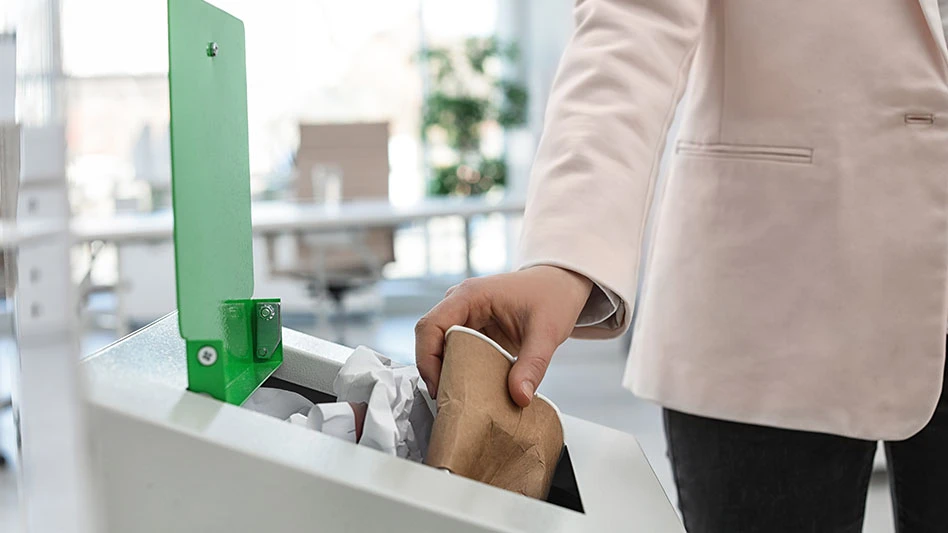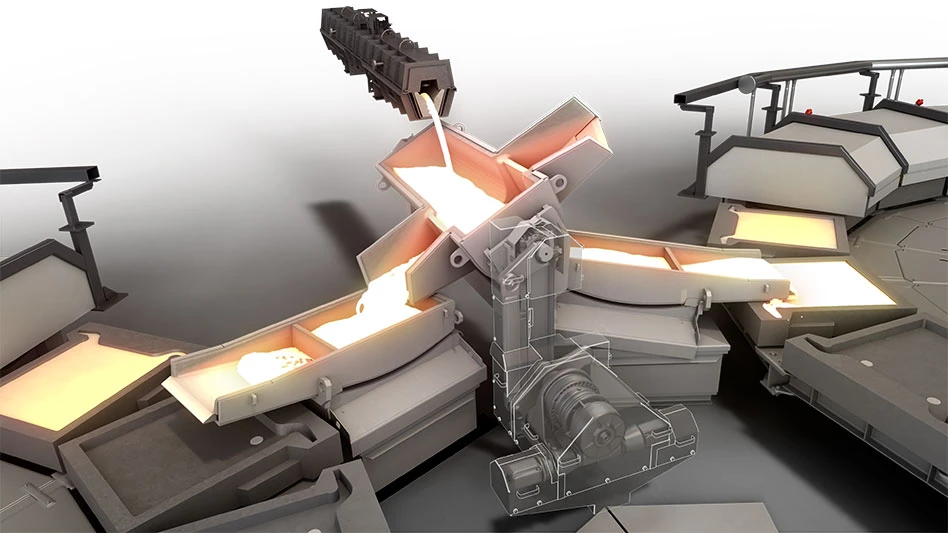
Photo courtesy of Hamos GmbH
A European Commission directive calling for 25 percent of plastic automotive components to be made from recycled content has created an additional incentive for auto shredding plant operators to upgrade their plastics-heavy automotive shredder residue (ASR) light fractions.
An essay distributed this February by Penzberg, Germany-based Hamos GmbH observes that extracting metal from ASR long has been a focus of the development of and investments in sorting technology.
Now, the sorting technology provider’s head of marketing Selinda Sliz writes, the 25 percent recycled-content policy—combined with another mandating that 30 percent of plastic be harvested for recycling from end-of-life vehicles (ELVs)—means “additional recycling processes will be necessary in the future.”
Sliz says in the EU, the average car contains between 150 and 200 kilograms (330 to 440 pounds) of plastic.
After shredding, these mixed plastics comprise the “shredder light fraction” and can include plastic bumpers, seat upholstery, dashboards and other interior components. If tires remain on a shredded ELV (or a spare is in the trunk), rubber joins the list.
Sliz writes, “The hard plastic fractions produced after separation of the light fraction still contain the unwanted rubber pieces from shredded tires. Some of these rubber pieces are in the same density range as the thermoplastics and therefore cannot be separated using density separation processes.”
The sorting equipment company says its KWS electrostatic separators can separate the rubber fraction, with Sliz saying it is “at least semiconductive due to the high proportion of carbon black.” If there is wood in the ASR stream, its conductivity means it also can be separated with electrostatics, she adds.
“The remaining hard plastic is then virtually rubber-free,” Sliz says. “Through a subsequent combination of wet and dry processing methods, pure fractions such as acrylonitrile butadiene styrene ABS, polystyrene (PS) and polypropylene (PP) can be produced from such mixed plastics.”
Separating the synthetic rubber is vital because the polymer does not melt in the plastics reprocessing methods used to create recycled-content ABS, PS or PP, according to Hamos.
“Even the smallest impurities of rubber in the regrind are enough to make a product or an extruded recyclate completely or partially unusable,” she writes. “This means that the clean and complete separation of the elastomer fraction from plastic regrind is a decisive step in achieving clean plastic fractions.”
The equipment provider says in this application, sorting by density is difficult when rubber pieces have a nearly identical density to other plastics, while sorting by color can be ineffective when exterior or interior plastic components are black (as are tires).
The company sasys, “Things become more difficult when both the rubber and the plastic regrind consist of nonconductive materials. In this case, electrostatic plastic-plastic separators do an excellent job.”
Air separation remains effective when used in tandem with electrostatics for sorting the plastics used in some interior components, according to Hamos.
Sliz says separation technologies being developed in Europe can “make it possible to produce high-quality plastic recyclates from the complex ASR mixtures, which can then be reused in the production of new plastic parts.”
Get curated news on YOUR industry.
Enter your email to receive our newsletters.
More from our latest newsletter
- Radius loses money, says merger on track
- Aurubis CEO says its metals play vital role
- LME reports healthy trading volumes in Q1
- ReMA, Germany’s VDM issue joint tariff statement






